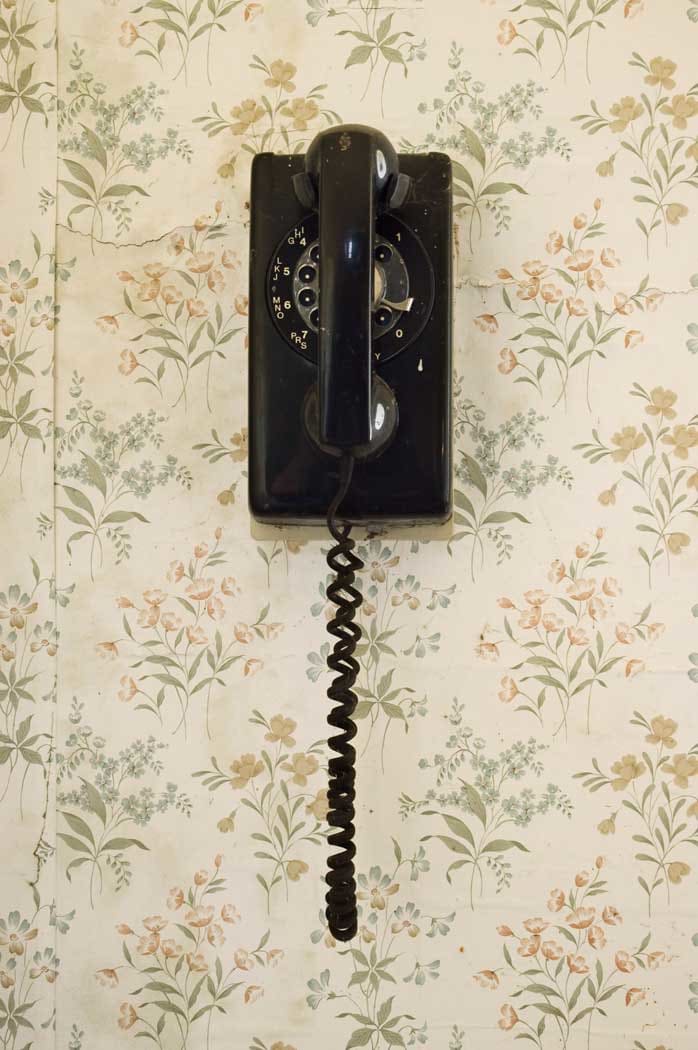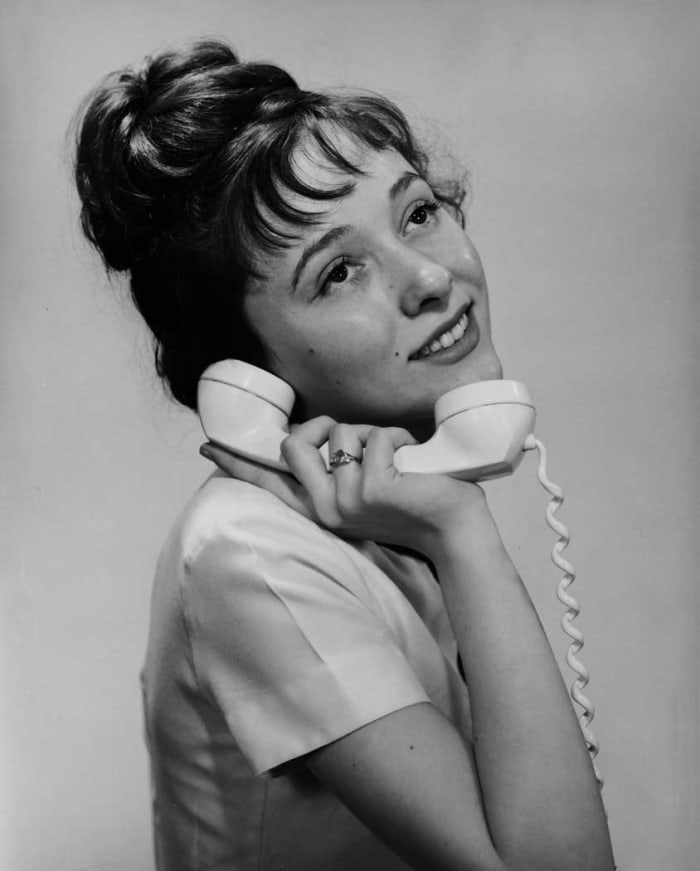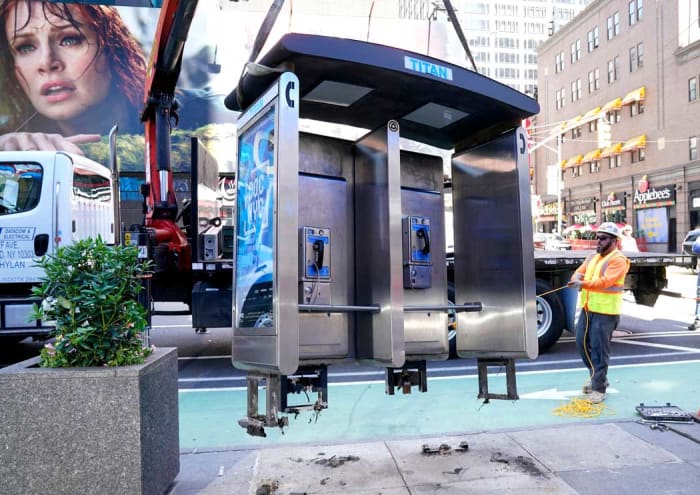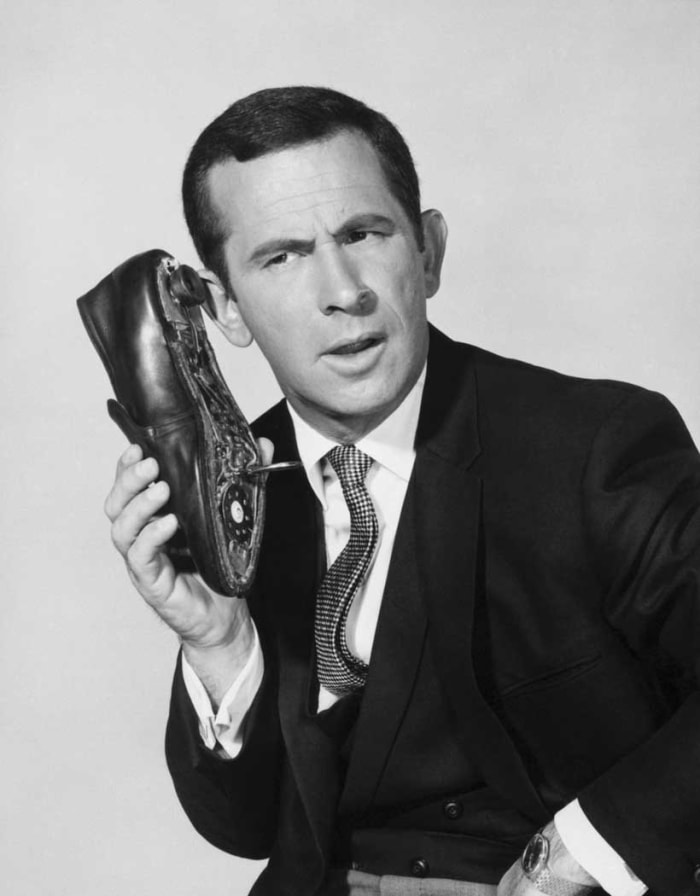There are seven of us. Five kids and my parents. I’m the youngest. The low man on the totem pole. I have no say in anything. For the most part, it’s not a problem. Until one day when I am 12.
Here’s the thing. We have one phone. It’s anchored on the downstairs hallway wall, off the one bathroom. One phone. One bathroom. Seven people. The hallway is a high-traffic area. Privacy? Hasn’t been invented yet.

The family phone on the downstairs wall in a high-traffic area. One phone. Seven people. Not good.
Getty Images
One day the phone rings. Mom answers.
Paul? No, he isn’t here, she says.
I am standing no more than five feet away from her. It’s a small house. I am always standing no more than five feet away from anyone.
I don’t know where he is, she says.
I am looking right at her.
I don’t expect him home anytime soon, she says.
Again, right here mom.
I hear a faint, optimistic, female voice through the phone asking if my mother would take a message. Fat chance.
Mom hangs up.
Who was that? I ask.
A girl, she says. And glares. At me.
I start to say something but think better of it. I leave to get a sweater because it is suddenly very, very cold in our small house.

The house suddenly becomes frosty from a mother’s icy glare.
Huseyin Demirci/Anadolu Agency/Getty Images
I am 12. Girls, who until recently, were stupid and likely cootie-infested, are now, oddly, sort of interesting. And even more weird, they find me – somehow, someway – dreamy. A bigger mystery Sherlock Holmes had never tackled.
And because of this recent development, my sainted mother, the epitome of all that is good in my world – kind, gentle, loving – was lying. Worse, she is upset with me for making her lie. Because a girl was calling. For me. Her baby. The hussy!

The Mom Home Defense System (MHDS) kept telephoning pre-teen girls at bay. A new communications strategy was desperately needed.
George Marks/Retrofile/Getty Images
I learned two things that day. One, my mother would go to any length to protect her youngest from brazen pre-teen girls who immodestly called boys. And two, I needed to head downtown to the only phone booth our small town had because there was no way I was ever talking to a girl on the phone in this joint.
And so began my secret relationship with the last bastion of kid privacy, the phone booth.
All of this makes a collect call – remember those? – to my kid memories when I read that the last phone booth in New York City has been yanked out of the city’s sidewalk cement. The move marks the official death of the public pay phone. And a small part of me has died with it.

Workers remove the final New York City payphone near Seventh Avenue and 50th Street in Midtown Manhattan, marking the end of an era.
TIMOTHY A. CLARY/AFP via Getty Images
New York, of course, was the mecca of phone booths. In the early 2000s, there were around 30,000 public street pay phones registered with the city. They blanketed the five boroughs in booths, pedestals, bubbles and pillars. But now? Fuggedaboutit!
“I hate to use the word nostalgia,” Mark Thomas, who documents pay phones in New York City on his website, The Payphone Project, told The New York Times. “But I think people miss a period of time when a call meant something. When you planned it and you thought about it, and you took a deep breath and you put your quarter in.”
Since a peak of 2.6 million public pay phones in the mid-1990s, this fortress of solitude has been on the decline. After pay phones stopped turning a profit, AT&T officially announced its exit from the market in 2007. Verizon followed suit in 2011.
In the age of the ubiquitous smartphone, where we are all connected all the time whether we want to be or not, it is oddly quaint to recall a time when making a private phone call was a challenge.
Alexander Graham Bell was granted a patent for the first telephone in 1876, but it wasn’t until the 1940s that even half of all Americans had a phone. Now, we all have one.

Unlike secret agent “86” Maxwell Smart, I didn’t have a trusty shoe-phone. To talk with girls, I used my shoes to walk to the only private place I knew: the phone booth.
Getty Images
I’m not sure when my parents got their first telephone. To me, the phone was always mounted to that hallway wall. But I am sure that flirty girls with access to their very own princess phones were patented in the 1970s, at least as far as I was concerned.
Because of their arrival, my mother lied. And I discovered privacy for the first time in my life. In a phone booth, downtown, with a pocket full of dimes.









